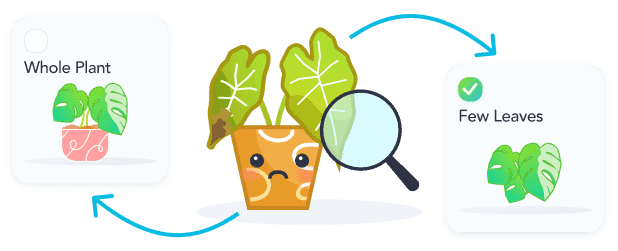Every 7d
Recommended Frequency
1 /2 cup of water
Recommended Amount
The Anthurium Hookeri likes their soil to be moist, but never soggy. Watering once per week should keep them happy as this will allow their soil to slightly dry out between waterings. The top inch of soil should be dry b...
Every 90d
Recommended Frequency
Fertilize your Anthurium Hookeri every three months using a liquid fertilizer high in phosphorus, diluted by three-quarters strength.
Indirect Sun
Recommended
Indirect Sun or Filtered Sun is when sun exposure is being filtered through a sheer curtain or is not able to have the sun's rays directly hit the leaves/flowers of your plant.
Every 730d
Recommended Frequency
Repot your Anthurium Hookeri every two years, or once it outgrows its pot.
Peat Soil
Recommended Soil
Peat Soil is an acidic soil that retains a lot of moisture and slows decomposition. Due to such a high moisture retention this mix may require irrigation to help with draining. This soil type is best used when paired wit...

Shop Anthurium Hookeri
Questions about Anthurium Hookeri
#NAME?

Toxicity of Anthurium Hookeri

Common Pests and Diseases
Root Rot
Overwatering
To address root rot in Anthurium hookeri, first, cease watering immediately and allow the soil to dry. Remove the plant from its pot and trim away any black, mushy roots with sterilized scissors. Treat the remaining healthy roots with a fungicide recommended for root rot. Repot the plant in fresh, well-draining soil and a clean pot. Going forward, ensure the pot has adequate drainage holes and only water the plant when the top inch of soil feels dry to the touch.
Aphid Infestation
Aphids are small, soft-bodied insects that feed on the sap of the Anthurium hookeri, often found in clusters on the undersides of leaves.
To manage aphid infestations, start by rinsing the plant with a strong stream of water to dislodge the pests. For persistent issues, apply insecticidal soap or neem oil directly to the affected areas, ensuring to cover both sides of the leaves. These treatments should be repeated every 7-10 days until the infestation is under control. Additionally, introducing natural predators like ladybugs can provide long-term suppression of aphid populations.

Related Plants
Other Articles:
Top 10 Most Popular Roses
Mar 22, 2022
How to Care for China Roses
Mar 11, 2022
How to Care for Chinese Money Plants
May 15, 2020
How to Grow and Care for A Bird of Paradise
Apr 26, 2020
Top 10 Plants To Grow In A Terrarium
May 31, 2022
How to Grow and Care for Lucky Bamboo
Mar 29, 2022
How to Grow and Care for Corn Plants
Mar 29, 2022
How to Care for Madagascar Dragon Trees
Mar 21, 2022



